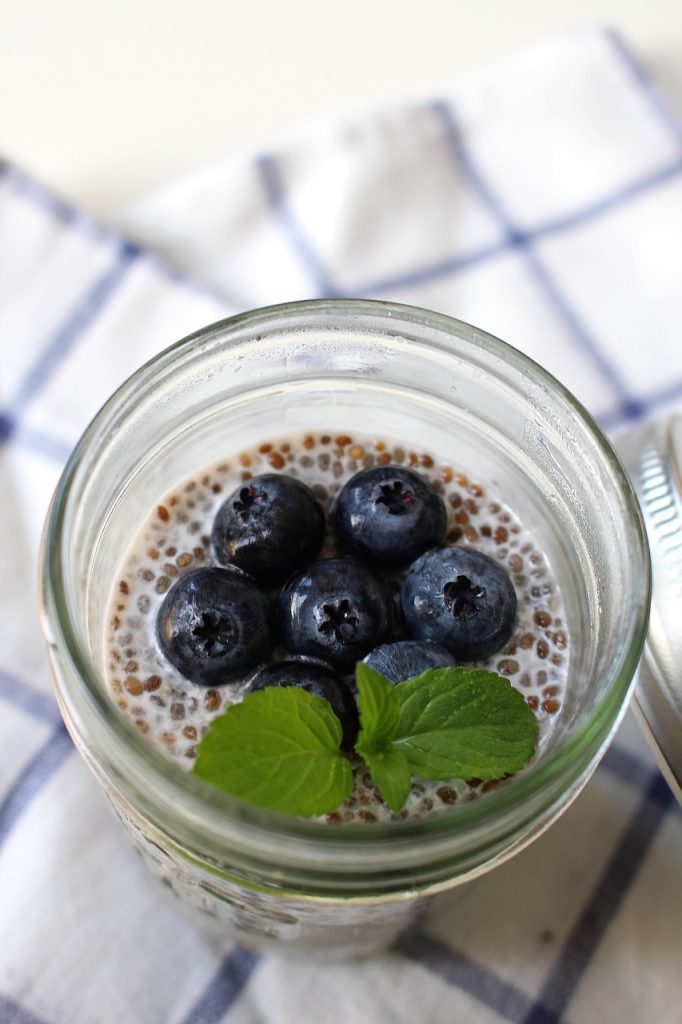The superfood food seed you need in your life.
Many so-called superfoods come into fashion, then quickly become yesterday’s news and quite frankly the taste can be a lot less super than the name suggests. However, Chia seeds are a decidedly non-offensive tasting superfood worth the addition to your plate. With twice the antioxidant capacity of blueberries, they are definitely off to a nutritionally good start (1).
But where do they come from?

Well, the Mesoamerican civilisation started eating these seeds around 1200BC, so it’s not exactly a new food on the block (2). These days chia seeds have gained a global following, and in 2018 the global market was worth $1.1 Billion USD, not bad for a tiny seed (3).
So, what’s the big deal about them?
The reason they are such a superfood is they are jam-packed with vital nutrients whilst having the bonus of being low in calories. They contain over 20 vitamins and minerals, and are especially high in vitamin C, which helps protect cells and keeps bones, skin and blood vessels healthy (4)(2) and vitamin A, which is needed for your immune system and night vision (useful when getting up for the loo in the night) (5)(2). They also contain high levels of essential omega 3 and 6 fats (2), Alpha linoleic acid the omega 3 fat found in chia seeds has been shown in studies to promote a less inflammatory state (2). Inflammation has recently been making headline news, due to the increasing evidence behind its contribution to many chronic illnesses such as heart disease, type 2 diabetes and cancer (2). And if all this wasn’t enough for this tiny seed, it’s also got fibre, needed for friendly gut bacteria and protein, the raw material for most of your tissues including skin, muscles and even your DNA (2).
So, chia seeds sound amazing, I’m now going to eat a whole packet of them….
Hold your horses. Start slowly with these little seeds. It is very rare but it is possible to have an allergic reaction so try a little bit first (2). They are great sources of fibre, which is brilliant, but go slowly when you introduce them. Especially if you don’t get much fibre at the moment, or you might experience some less than desirable side effects, such as wind and loose stools (6). If you are taking any pharmaceuticals, as always, it’s best to check with your doctor before introducing new foods (7). A tablespoon a day is a good level for most people, with up to two tablespoons per day, being the most you want to be eating (6).
Right, so I’m convinced. I know the science, but what am I going to do with them?
Firstly, soak them! These little seeds are like tiny little sponges and can take on, a quite frankly startling amount of water, 10-12 times their own weight. If you don’t soak them first, then they are going to soak up water from you, which isn’t what you want. They are super versatile, and with very little flavour of their own, can be added to many of your existing recipes to give a nutritional boost. Naturally gluten-free, you can use chia ground as flour, or in smoothies. They can also be used as an egg substitute when they are soaked in water. They can be savoury or sweet and are very popular in trendy cafes where they are made into Instagram-friendly chia puddings. Try good old google for recipes, a great place to start is www.bonappetit.com (8). Think of all the meals you are having today which could be boosted by chia power. What’s stopping you?
For advice on how you can make positive dietary changes to support your own health book a complimentary 15-minute discovery call with me by clicking on the button below.
Reference List
1. Kulczyński B, Kobus-Cisowska J, Taczanowski M, Kmiecik D, Gramza-Michałowska A. The chemical composition and nutritional value of chia seeds—current state of knowledge. Vol. 11, Nutrients. MDPI AG; 2019.
2. Valdivia-López MÁ, Tecante A. Chia (Salvia hispanica): A Review of Native Mexican Seed and its Nutritional and Functional Properties. In: Advances in Food and Nutrition Research. Academic Press Inc.; 2015. p. 53–75.
3. Grand View Research. Chia Seeds Market Size, Share | Global Industry Analysis Report, 2025 [Internet]. 2019 [cited 2020 Feb 11]. Available from: https://www.grandviewresearch.com/industry-analysis/chia-seeds-market
4. NHS. Vitamins and minerals – Vitamin C – NHS [Internet]. 2017 [cited 2020 Feb 11]. Available from: https://www.nhs.uk/conditions/vitamins-and-minerals/vitamin-c/
5. NHS. Vitamins and minerals – Vitamin A – NHS [Internet]. 2017 [cited 2020 Feb 11]. Available from: https://www.nhs.uk/conditions/vitamins-and-minerals/vitamin-a/
6. Teoh SL, Lai NM, Vanichkulpitak P, Vuksan V, Ho H, Chaiyakunapruk N. Clinical evidence on dietary supplementation with chia seed (Salvia hispanica L.): a systematic review and meta-analysis. Nutr Rev [Internet]. 2018 Apr 1 [cited 2020 Jan 15];76(4):219–42. Available from: https://academic.oup.com/nutritionreviews/article-abstract/76/4/219/4858537
7. Natural Medicines Database. Natural Medicines – Professional [Internet]. 2019 [cited 2020 Feb 11]. Available from: https://naturalmedicines.therapeuticresearch.com/databases/food,-herbs-supplements/professional.aspx?productid=1224
8. Goldberg E. 20 Chia Seed Recipes That Don’t Just Involve Pudding | Bon Appétit [Internet]. Bon Appetit. 2017 [cited 2020 Feb 11]. Available from: https://www.bonappetit.com/gallery/chia-seed-recipes

